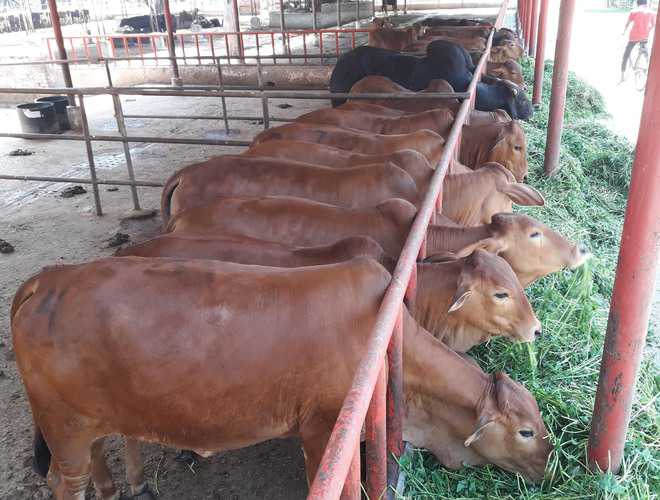Parveen Arora
Tribune News Service
Karnal, August 21
With the help of a technique named “biostimulation”, scientifically known as “male effect”, scientists at National Dairy Research Institute (NDRI) have reduced the calving age of indigenous cattle breeds by six to nine months.
An experiment has shown that heifers (15-month-old calves) of the Sahiwal breed grow at a faster rate and attain puberty at 19 months and calved for the first time at 29 months, as compared with general heifers which attain puberty at 28-30 months and calving age at 37-38 months.
Calving is a process when cows and buffaloes deliver calves, while puberty refers to an age when cows and buffaloes come into heat for the first time in their life.
Dr RRB Singh, Director, NDRI, said: “A team of scientists Dr ML Kamboj, Dr Pawan Singh, Dr SS Lathwal, Dr Nishant Kumar and Dr Anjali Aggarwal, research scholars Dr Sanjay Choudhary and Dr Manmohan Singh worked on the project ‘Effect of biostimulation on puberty and reproductive performance of dairy cattle’. I congratulate the team for the success as it will reduce the cost of rearing animals up to maturity.”
Dr Kamboj said, “Indian native breeds of cows are known for their hardiness, heat stress tolerance and ability to thrive on poor feed. But farming with them is marred with poor reproduction in terms of slower rate of growth during adolescence, late sexual maturity and longer age at first calving. After calving, there is again delay in return to the oestrus cycle, resulting into longer calving intervals and thus shorter productive life.”
To overcome such problems, NDRI scientists worked on “biostimulation” which acts through bull pheromones such as smelling, touching and vocal pathways, stimulating neuro-endocrine cascade in female hypothalamus and leading to the early onset of puberty in females.
For the experiment, 24 heifers of around 15 months of age and two bulls were selected. The heifers were divided into three equal groups. The first group of heifers was further divided into two sub-groups separated by a fence with a bull placed between them (fence line contact). The second group had direct contact with a bull for six hours every day. The third group did not have any contact with a bull.
Dr Kamboj said after calving, Sahiwal heifer came into heat within two months of calving as against three-months against non-biostimulated cows. He appealed to commercial dairy farmers to keep a bull with 50 cows for better reproduction.
Take on reproduction
We observed three groups for eight months and we got success, as the heifers which were in direct or fence line contact with the bulls grew at a faster rate and attained puberty at 19 months and were calved for the first time at 29 months. The third group attained puberty at 24 months and were calved for the first time at 34 months. Dr Pawan Singh, head, livestock production mgmt
Unlock Exclusive Insights with The Tribune Premium
Take your experience further with Premium access.
Thought-provoking Opinions, Expert Analysis, In-depth Insights and other Member Only Benefits
Already a Member? Sign In Now










